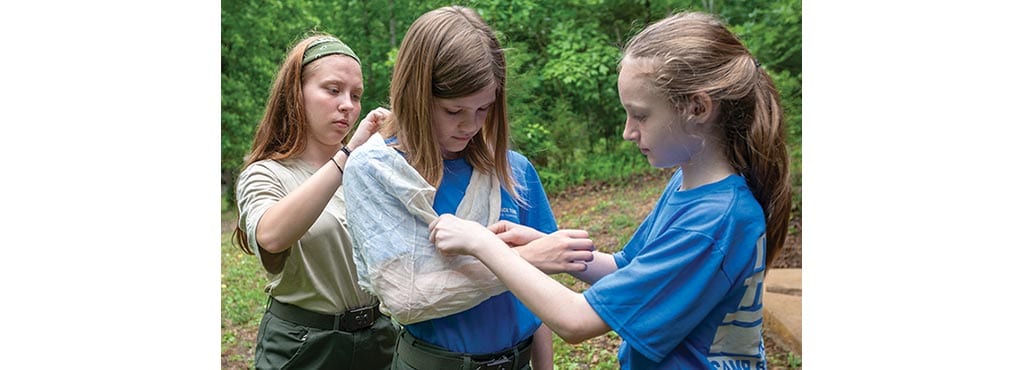
SUMMARY
We all know how easy it is to turn an ankle on a rough trail with a heavy pack on our backs. Even minor injuries can quickly bring a trip to an unpleasant end. Injuries of the bones (fractures), joints (dislocations), ligaments (sprains), or muscles and tendons (strains) are common after falls, collisions, twists, or overuse. Fortunately, many of these types of injuries can be prevented.
GENERAL INFORMATION
Prevention and Incidence
Scouting involves vigorous physical activity that can put participants at risk for injury. To identify and reduce injuries, we must understand both the activity and the risks involved. Anticipate and prepare for things that might go wrong. Proper preparation includes selecting a safe site, using well-maintained equipment, providing appropriate supervision, and having the necessary supplies and knowledge to treat injuries that might occur.
Assessment of Injury
First-aid assessment of orthopedic injuries is completed with the DOTS assessment technique (Deformity/Open wound/ Tenderness/Swelling). Deformity of a bone or joint indicates a severe problem. An open wound might indicate a severe problem. Other signs of injury include localized tenderness and/or swelling, or the inability to bear weight.
Treatment of Minor Injuries
The RICE method (Rest, Ice, Compression, and Elevation) is the appropriate treatment for most minor soft-tissue injuries.
- Rest—Stop using the injured area. This might include the use of a splint.
- Ice—Apply cold therapy for 15 to 20 minutes every four hours. Never apply ice directly to the skin; instead, place a thin cloth between the ice and the skin to prevent skin damage.
- Compression—An elastic bandage can help prevent swelling and provide support. Remember: Do not wrap it so tightly that it cuts off circulation. Be sure to check for circulation, sensation, and motion after applying the wrap and periodically thereafter. Signs to check for include decreased sensations; throbbing pain that is different from the injury; tingling, bluish or mottled skin; or a decreased pulse. If any of these signs are present, the wrap should be released and reapplied.
- Elevation—Raise the injured extremity above the level of the heart when possible. This will help reduce swelling.
When to Seek Advanced Care
- Any open wound directly over a deformity or other orthopedic injury requires emergency medical care. Puncture wounds also require medical care.
- If symptoms persist (swelling, pain, deformity, or inability to bear weight), the injured person should be transported for advanced care and assessment.
First-aid kits should include a structural aluminum malleable splint (commercially called a SAM® splint) and material for padding bony prominences, as well as elastic bandages like Ace™ wraps. Encourage the people in your unit to take BSA’s wilderness first-aid course for any adventure, especially those that take place in the backcountry.
RESOURCES


